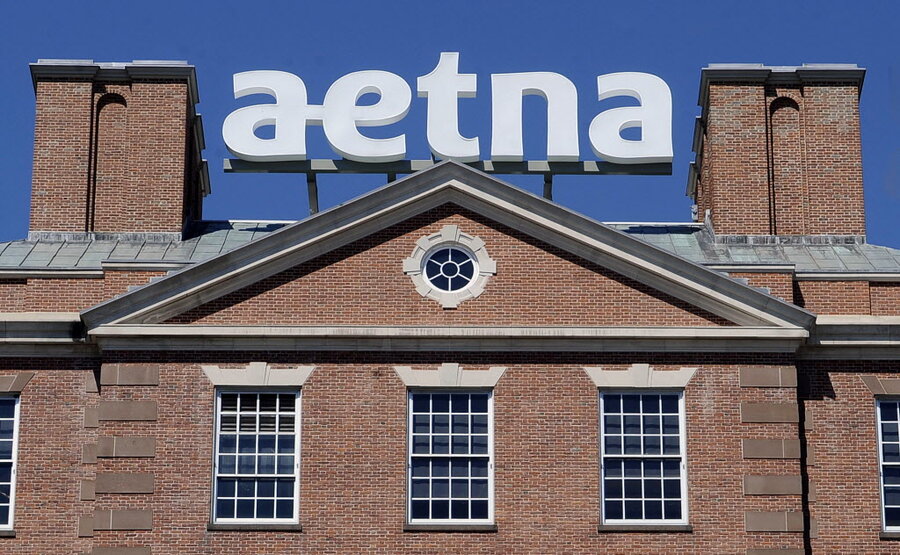Aetna beats profit estimates: Who are the real winners with Obamacare?
Loading...
As more and more Americans get insured under Obamacare, health insurance giant Aetna is watching its profits soar.
On Tuesday, Aetna Inc reported that its adjusted net profit for the second quarter was better than expected after more members joined its government plans and medical costs remained the same. Over the past few years, many large health insurance companies and hospitals have been reaping the benefits of the Affordable Care Act, a fact that observers say proves that the biggest winners of Obamacare are the healthcare giants themselves.
“For years, insurance companies and hospitals told Americans that one reason their insurance bills were so high was because they were paying the hidden cost of medical care for the uninsured,” wrote Chad Terhune for the LA Times in December.
“The Affordable Care Act sought to remedy much of that by unleashing the biggest expansion of insurance coverage in half a century. Ten million Americans became newly insured, and federal officials estimate that $5.7 billion in uncompensated care was wiped out this year as hospitals received more paying patients,” he continued.
And more paying patients have translated into higher profits and soaring stock shares for insurers, observers note.
"Among five of the largest health insurers – Aetna, Anthem, Cigna, Humana, and UnitedHealth Group – their stocks are up an average of 107% over the past two years," Ed Snyder, a financial planner at Oaktree Financial Advisors in Carmel, Indiana, told the website Main St.
"ACA-compliant plans are required to include certain benefits, and the insurance companies are pricing those benefits into the plans, which means premiums are increasing," Mr. Snyder added. "In a lot of cases, the insurance company's claims liability is not increasing, though, and that ends up being profit."
Over the past five years, as the five largest insurers consistently beat the S&P 500, overall profits rose substantially.
"There is greater demand for health care and that has improved profits for insurers and hospitals," Phil Orlando, chief equity strategist at Federated Investors, explained to CNN Money.
Last year, after profits exceeded expectations, Aetna opted to expand its private health insurance products on government exchanges into Georgia, the seventeenth state for the health insurance giant. The company’s rival, UnitedHealth Group, also expanded in 2015 and raised its 2015 profit outlook after announcing its second-quarter results last month.
And hospitals have been doing well, too.
At the country’s largest hospital chain, Hospital Corporation of America, executives estimated that Obamacare accounted for about a third of third-quarter profit growth in 2014 and as much as 4 percent of the company's adjusted income, CNBC’s Tim Mullaney reported.
“King of Prussia, Pennsylvania-based Universal Health Services said the law might account for 40 percent of profit gains. And LifePoint Hospitals, which has 68 mostly rural locations in 21 states, said Obamacare boosted third-quarter profit by $12 million, more than half of its overall gain, and will add as much as $50 million to profits for the year,” Mr. Mullaney wrote at the time.
Still, some questions remain about whether Obamacare has also meant better prices for all of the newly insured consumers.
According to the Commonwealth Fund, the Affordable Care Act’s requirement that health insurance companies limit the amount of premium dollars they can spend on administrative costs saved around $5 billion for consumers between 2011 and 2013.
Nevertheless, others say that the costs associated with the government exchanges are still unaffordable for many of the country’s poorest residents.
“Low- and middle-income consumers who use the marketplaces often are able to qualify for tax subsidies to offset the cost of monthly premiums and help them afford care,” wrote Kimberly Leonard for US News and World Report’s Data Mine. “But while the Department of Health and Human Services has touted low premiums averaging $100 a month for the majority of Americans who use exchanges, that message only tells part of the story, leaving out details about copays, deductibles and provider costs that may be out of reach.”
Even so, as economists herald an improving economy, medical costs are expected to rise for insurers as overall health spending increases, a fact that experts say will impel insurers to consolidate.
This quarter, however, Aetna says its medical costs were moderate, allowing it to improve its medical benefit ratio to 81.1 percent from 83.1 percent.








